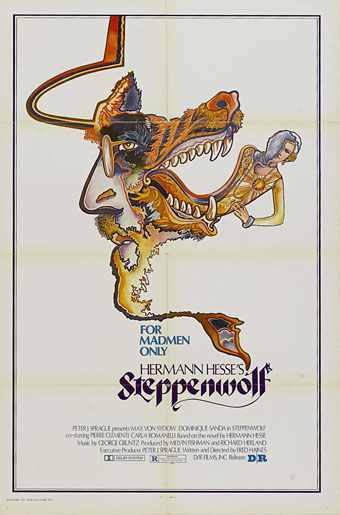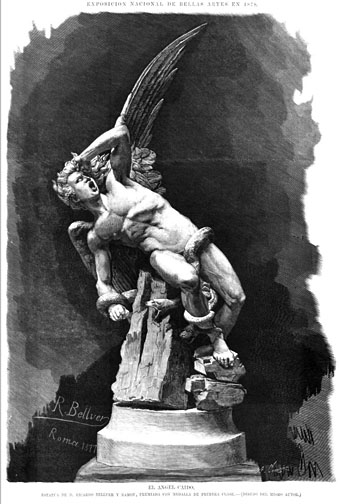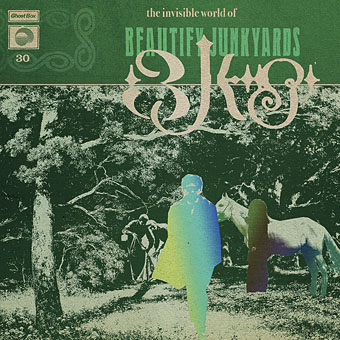Poster for Steppenwolf (1974), a film directed by Fred Haines (his only one) based on the novel by Herman Hesse, and starring Max von Sydow and Dominique Sanda. No artist or designer credited.
• “…in her 20s, she heard two elderly folk singers and was struck by their ‘gentle dignity’. It cemented her own philosophy: ‘No dramatising a song, no selling it to an audience, no overdecorating in a way that was alien to English songs, and most of all, singing to people, not at them.'” Laura Snapes on Shirley Collins and her memoir, All in the Downs.
• Many of the BBC’s sound effects were available for years in necessarily small collections on vinyl, tape and CD. Now you can download over 16,000 of them for free here. The interface is still primitive so try typing some words into the search box to see what shows up.
• Carl Swanson on Natalie Frank’s paintings based on Pauline Réage’s Story of O, and the problems these caused when she tried to exhibit them.
• Pictures of the Jazz Age: Regina Marler reviews three books about photographer Berenice Abbott.
• “The late Juraj Herz was a one-man wave of Czechoslovak horror,” says Kat Ellinger.
• Mark Dery on William S. Burroughs and the dead-end horror of the Centipede God.
• Mixes of the week: FACT mix 648 by Laraaji, and XLR8R Podcast 538 by Fluxion.
• Kashmir by Forming The Void, and Kazakhstan by Brian Eno.
• At Dennis Cooper’s: Dominique Sanda Day.
• PixaTool by Kronbits.
• Born To Be Wild (1968) by Steppenwolf | Steppenwolf (1976) by Hawkwind | Der Steppenwolf (2015) by Selofan





